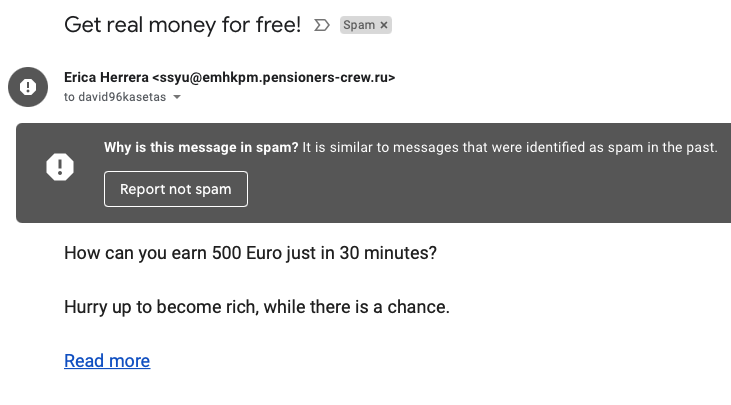What is a Ransomware Attack and How to Avoid it?
According to The State of Ransomware 2020 study by Sophos, which included 5,000 IT managers from 26 different countries, 51% of respondents said that they were victims of ransomware that year.
On average, the cost of a ransomware attack in the U.S, Canada and Europe was $312,493 in 2020, up from $115,123 in 2019, according to Computer Weekly.
Do you have $300,000+ to give away to cybercriminals, without any real guarantee that they will give you back control of your computer?
Probably not, which is why you need to know how to prevent ransomware.
In this article, we’ll only discuss ransomware prevention, or in other words, what to do to avoid a ransomware attack. This is important because, once the attack already happens and you get a message to “pay up, or else”, it’s already too late for the most part.
What is Ransomware?

If you’ve never seen a ransomware attack, lucky you, but you probably will one day.
Ransomware attacks are growing every year.
Since the beginning of this year, the number of businesses affected by ransomware has been increasing by 9% per month, according to CheckPoint.
So what is ransomware?
Ransomware is a type of malicious software that locks and encrypts the victim’s computer, which allows the attacker to demand a ransom before restoring access to the user.
Unfortunately, paying this ransom often doesn’t mean getting access to your device back.
This is why ransomware prevention is a much better idea.
How to Prevent Ransomware Attacks?
Would you rather pay thousands of dollars to repair a catastrophe, or zero dollars to prevent it?
Ransomware prevention will cost you almost nothing. You might (and that’s entirely optional) need to pay for a VPN, but that’s about it.
Here are the best ways to prevent a ransomware attack:
- Avoid Giving Out Your Personal Data Online
Did you receive an email from someone you don’t know that asks for your personal information? If you can’t verify the source, 10/10 it’s a cybercriminal gathering data for a ransomware attack.
Do not help them by giving out your personal data!
If they claim to be a representative from a company that you use, don’t respond to them. Instead, contact the company to corroborate their request and make sure it’s genuine.
- Keep Your Software Up-to-Date
Up-to-date software and operating systems have a much lower chance of getting breached by malware.
If your software or OS hasn’t been updated in a while, it becomes vulnerable to cyberattacks and since most software today can be updated automatically, there is no excuse not to do it.
- Use Security Software and Keep it Updated
Think of security software as a security door in your apartment. Yes, you can use a regular door, which has a lock, but all your stuff inside will be much more secure with a security door and lock.
Today, when cyberattacks get more frequent and more costly, a good security software, like an antivirus and antimalware protection is imperative to have. For instance, here are some great anti-phishing solutions you should use to protect your email.
However, keep in mind that hackers never rest and they are always finding new vulnerabilities to exploit. This is why you need to keep your security software updated as well so it can keep up.
- Avoid Using Public WiFi or Use a VPN
Public WiFi, i.e. airport WiFi, is okay in a pinch, but you should avoid using it, especially if you need to use your email, login to your bank or pay for something online.
If you do need to use public WiFi, for instance, if you’re traveling a lot for work, make sure to use a VPN (Virtual Private Network), which will protect your connection from possible attackers.
- Don’t Open Unverified Email Attachments or Click on Links
Most ransomware gets in either through email attachments or links.
12% of users who opened a phishing email, also opened an attachment or a link in it, which later often led to a ransomware attack.
The number one reason people open email attachments and links from unverified and unknown sources, is curiosity.
For instance, here’s a phishing email I received just this morning, promising to show me how to earn 500 Euro in 30 minutes:

Sounds easy, all I have to do is click on the link and I can learn how to earn that money.
Except that this screams spam and phishing (you don’t even need a warning message to see it) and clicking on that link would probably cost me a lot more than 500 Euros.
How do I know this?
I just have to look at the email address and see that it’s a spammer.
Of course, this one was easy to spot. On other occasions, cybercriminals are a little more subtle, so make sure to know how to recognize and protect against a phishing attack.
The bottom line is this:
Do not open links and attachments if you don’t know who the sender is. Always verify the source first.
- Never Download From Suspicious Websites
You should be very careful about downloading stuff from the Internet as it is, but even more so from sites you visit for the first time.
Only download from sources you know you can trust. For example, you can check out Scam Avenger for a list of suspicious websites detected by their service or reported to them by users.
Make sure that the website’s URL contains an “S” in “HTTPS” instead of just “HTTP”.
Conclusion
Ransomware is a serious cyber threat and it can cost you thousands of dollars. However, as you can see, ransomware prevention can save you this money and make sure you don’t suffer from cyberattacks like this one.
We hope you learned how to prevent ransomware from this article and that it won’t affect you or your organization.